Building Seattle | Via

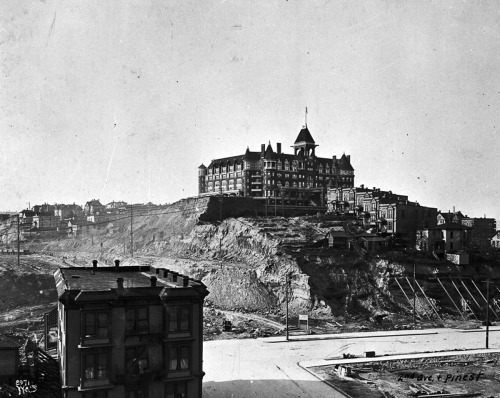


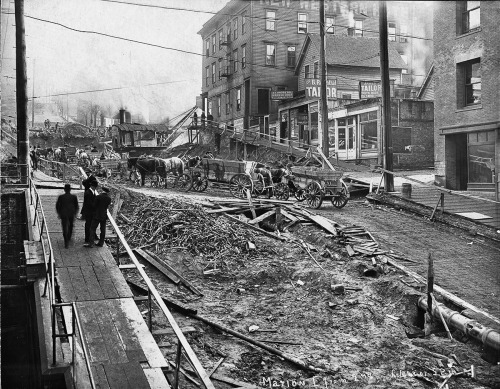
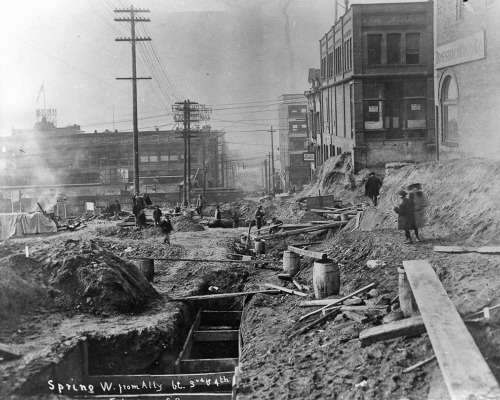
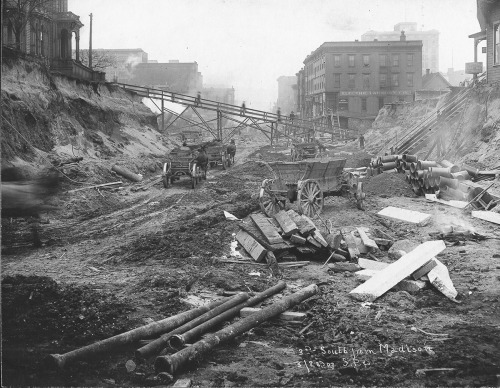
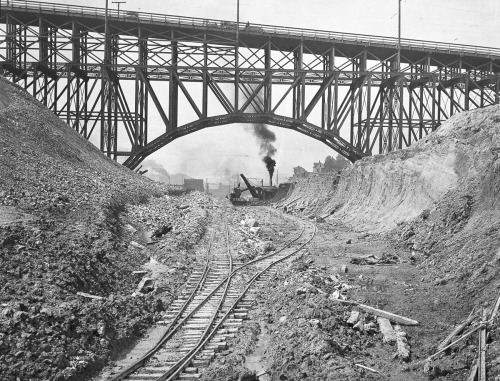
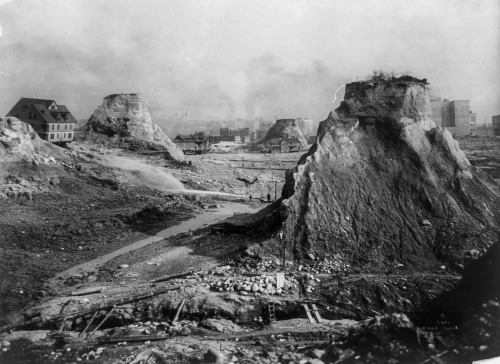
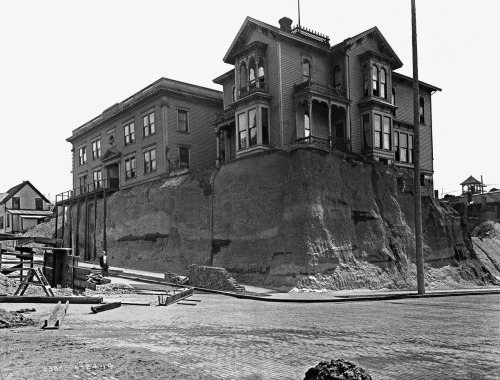
Building Seattle | Via
“The instincts of the pioneer led them aright. Although not without its difficulties, the situation of Seattle is unique among the cities of the world.”
-Arthur H. Dimock 1926
At the beginning of the 20th century, Seattle, Washington was rapidly becoming a major hub of trade in the Pacific Northwest.
Situated on a narrow, hilly isthmus, the city needed to grow in an organized way.
Following a fire which razed much of the downtown area, City Engineer R.H. Thomson took the opportunity to spearhead a wide-ranging effort to tame the terrain around the city and prepare it for a century of growth.
Canals were dug, rivers were diverted and mountains were moved.
In particular, the glacial hills and ridges which separated neighborhoods from the downtown waterfront were deemed a major impediment to travel and commerce, and a prime target for removal.
From the 1890s through the 1920s, more than 50 million cubic yards of earth were scraped away with pick axes, water cannons, steam shovels and conveyor belts. Much of the displaced earth was used for filling in tidal flats on the waterfront.
The “regrading” of the terrain was a boon for some. Downtown residential real estate value was estimated to have increased 1,000% in two years. The owner of the hilltop Denny Hotel (later called the Washington Hotel) was so optimistic about the increase in land value that he tore down the hotel himself.
A popular myth held that some land owners refused to yield their property to the city. While negotiations proceeded, engineers were forced to continue the regrading around them. These untouched properties, looming dozens of feet above flattened plains of dirt, came to be called “spite mounds.”
In fact, there is no evidence that any of the owners of these mounds were opposed to the regrade. James Kelley, owner of several of the mounds, supported the regrade, but was late to lower his properties because he was out of town when contracting began.
When regrading finally ceased with the onset of the Great Depression, the shape of the city had been radically changed.
But the ghost of the old city remains — underground. Some of the Victorian ground level streets remain as a subterranean network of tunnels and passageways beneath the sidewalk.
More Posts from Villiany and Others



where am i
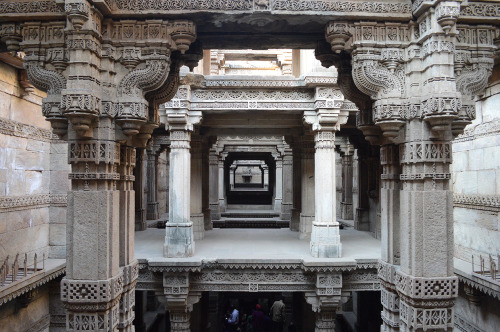
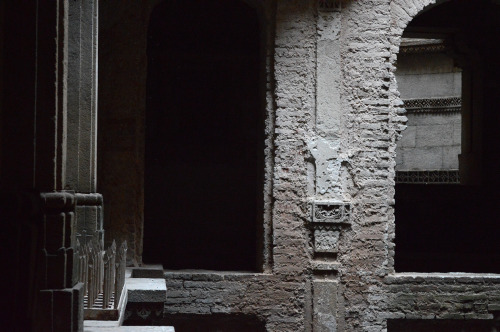










Casper Octopus (Caspar sp.), family undetermined, Nazca Ridge, off the Coast of Peru (Pacific Ocean)
Recently discovered, 2016.
photograph via: Ocean Census
-
 dotglobal liked this · 1 month ago
dotglobal liked this · 1 month ago -
 greenlandly liked this · 5 months ago
greenlandly liked this · 5 months ago -
 xcrimsonqueen liked this · 6 months ago
xcrimsonqueen liked this · 6 months ago -
 kestarren liked this · 1 year ago
kestarren liked this · 1 year ago -
 bone--salad liked this · 1 year ago
bone--salad liked this · 1 year ago -
 sunnyyellowflower liked this · 2 years ago
sunnyyellowflower liked this · 2 years ago -
 jiffisquid liked this · 2 years ago
jiffisquid liked this · 2 years ago -
 theravenchilde reblogged this · 3 years ago
theravenchilde reblogged this · 3 years ago -
 shilohta liked this · 3 years ago
shilohta liked this · 3 years ago -
 rosaenvuelta liked this · 3 years ago
rosaenvuelta liked this · 3 years ago -
 itsbeartime reblogged this · 3 years ago
itsbeartime reblogged this · 3 years ago -
 expectsomuch liked this · 3 years ago
expectsomuch liked this · 3 years ago -
 queenienoodle reblogged this · 3 years ago
queenienoodle reblogged this · 3 years ago -
 elizabethgoudge liked this · 3 years ago
elizabethgoudge liked this · 3 years ago -
 notwiselybuttoowell reblogged this · 3 years ago
notwiselybuttoowell reblogged this · 3 years ago -
 alux-ulkan liked this · 3 years ago
alux-ulkan liked this · 3 years ago -
 northwest-by-a-train liked this · 3 years ago
northwest-by-a-train liked this · 3 years ago -
 a-badbowlofsoup reblogged this · 4 years ago
a-badbowlofsoup reblogged this · 4 years ago -
 a-badbowlofsoup liked this · 4 years ago
a-badbowlofsoup liked this · 4 years ago -
 devientdeco reblogged this · 4 years ago
devientdeco reblogged this · 4 years ago -
 eyeswideoff333 liked this · 6 years ago
eyeswideoff333 liked this · 6 years ago -
 theegoist liked this · 6 years ago
theegoist liked this · 6 years ago -
 l-m-iglesia reblogged this · 6 years ago
l-m-iglesia reblogged this · 6 years ago -
 l-m-iglesia liked this · 6 years ago
l-m-iglesia liked this · 6 years ago -
 szwy reblogged this · 6 years ago
szwy reblogged this · 6 years ago -
 icenose reblogged this · 6 years ago
icenose reblogged this · 6 years ago -
 afotw liked this · 6 years ago
afotw liked this · 6 years ago -
 lastinstructions liked this · 6 years ago
lastinstructions liked this · 6 years ago -
 teamjate liked this · 7 years ago
teamjate liked this · 7 years ago -
 mileysyrups liked this · 7 years ago
mileysyrups liked this · 7 years ago -
 antonio-rodrigues-pinto liked this · 7 years ago
antonio-rodrigues-pinto liked this · 7 years ago -
 stoverton liked this · 7 years ago
stoverton liked this · 7 years ago -
 ishmire reblogged this · 7 years ago
ishmire reblogged this · 7 years ago -
 ishmire liked this · 7 years ago
ishmire liked this · 7 years ago -
 jonnykv liked this · 7 years ago
jonnykv liked this · 7 years ago -
 strawberrymintbonbon liked this · 7 years ago
strawberrymintbonbon liked this · 7 years ago -
 d503-intertwine liked this · 8 years ago
d503-intertwine liked this · 8 years ago -
 rearviewrosary liked this · 8 years ago
rearviewrosary liked this · 8 years ago -
 desmadrechic liked this · 8 years ago
desmadrechic liked this · 8 years ago -
 appalleddinosar liked this · 8 years ago
appalleddinosar liked this · 8 years ago -
 flickthe reblogged this · 8 years ago
flickthe reblogged this · 8 years ago


